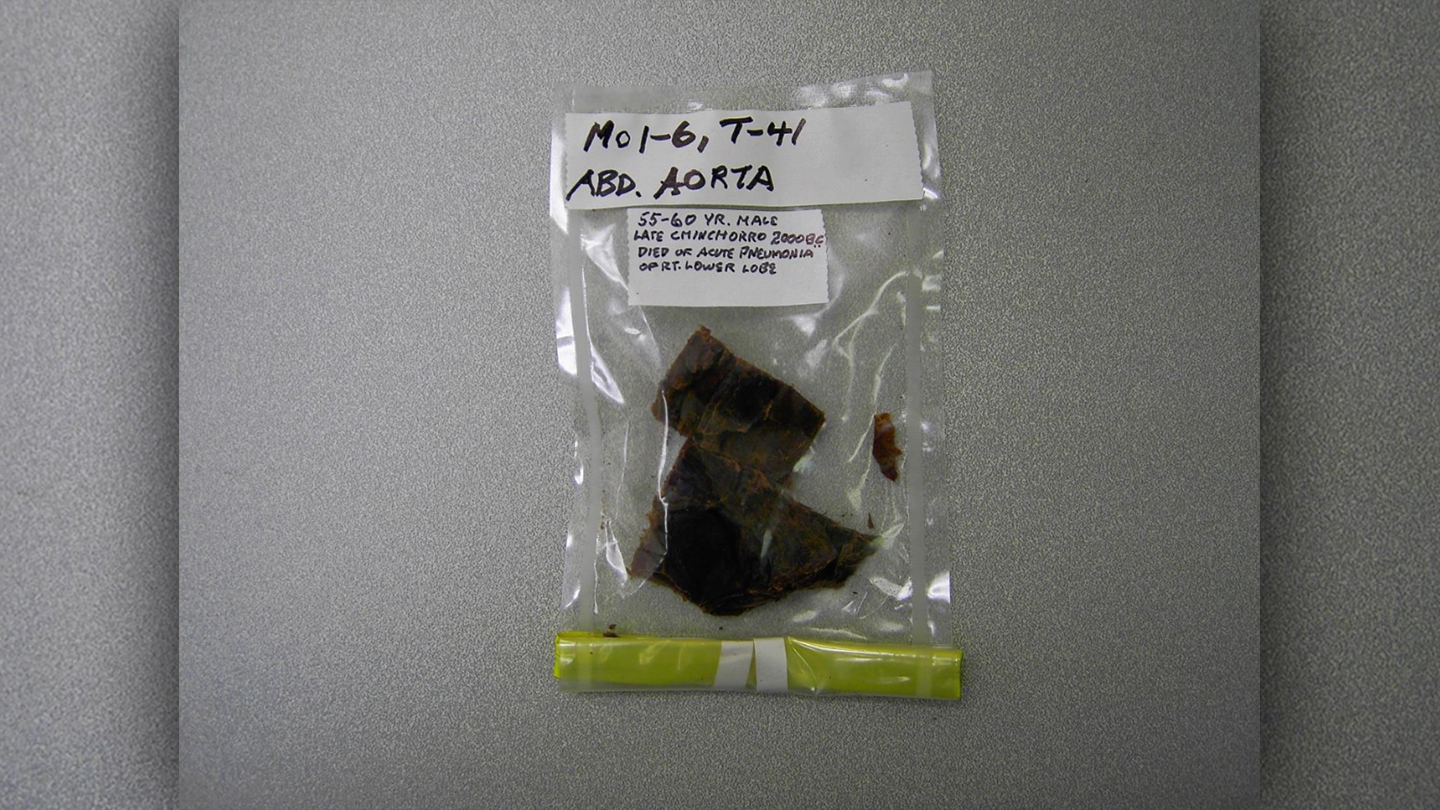4,000-Year-Old Mummies Showed Early Signs of Heart Disease
Scientists used near-infrared spectroscopy to spot telltale lesions in mummies' arteries.

Four-thousand-year-old mummies have cholesterol buildup in their arteries, suggesting that heart disease was likely more common in ancient times than once thought, according to a new study.
Prior studies have examined arterial calcium accumulation in mummified human hearts and arteries using dissection and X-ray computed tomography (CT) scanning. But these studies showed damage that only occurs in the later stages of heart disease and presents an incomplete picture of how widespread heart disease risk may have been thousands of years ago.
Now, researchers have analyzed arteries from five ancient mummies from South America and ancient Egypt, detecting an earlier stage of atherosclerosis — when plaque collects on artery walls and restricts blood flow.
Related: 9 New Ways to Keep Your Heart Healthy
"I've been looking at the pattern of heart disease in populations for over 20 years," said lead study author Mohammad Madjid, an assistant professor of cardiovascular medicine at McGovern Medical School, part of the University of Texas Health Science Center at Houston."Over time, the question that came to my mind was: Is it a disease of the modern day, or is it some process that is inherent to humans, irrespective of modern life?"
To answer that question, Madjid and his colleagues collected arterial samples from five mummies dating from 2000 B.C. to A.D. 1000; the remains represented three men and two women, who were between 18 years old and 60 years old. The scientists scanned tiny sections of arteries, which were just a few centimeters in length, Madjid told Live Science. Their analysis revealed lesions from accumulated cholesterol, precursors to the plaque buildup that blocks arteries and leads to heart attacks. This is the first evidence of earlier-stage lesions in mummies from different parts of the world, the study authors wrote.

Earlier studies found later-stage arterial plaque in mummies from Greenland dating to 500 years ago, and in Egyptian mummies dating to more than 3,000 years ago. And CT scans of the mummified Ice Age hunter Ötzi revealed in 2018 that he was a likely candidate for a heart attack, with three sections of hardened plaque near his heart, Live Science previously reported.
Get the world’s most fascinating discoveries delivered straight to your inbox.
Cholesterol deposits on arterial walls "essentially are the body's wound healing mechanism gone wrong," Madjid explained. "It's in response to multiple traumas [such as] infections, high cholesterol, exposure to smoke and other issues that can damage the inner lining of arteries, called the endothelium," he said.
The body's inflammatory response is a normal part of wound healing, but damaged arterial walls are susceptible to buildup of white blood cells, which can lead to accumulations of cholesterol. This buildup first shows up as streaks and lesions, and can later thicken enough to block arterial blood flow, Madjid said.
"These are very well-known processes that we find under the microscope in the modern age, we now have seen similar patterns in our ancestors, too," he said. "It looks like this inflammatory process and the response is an inherent part of our life."
The findings were published online in the October 2019 issue of the American Heart Journal.
- 7 Foods Your Heart Will Hate
- Photos: Mummies Discovered in Tombs in Ancient Egyptian City
- Beyond Vegetables and Exercise: 5 Surprising Ways to Be Heart Healthy
Originally published on Live Science.


Mindy Weisberger is a science journalist and author of "Rise of the Zombie Bugs: The Surprising Science of Parasitic Mind-Control" (Hopkins Press). She formerly edited for Scholastic and was a channel editor and senior writer for Live Science. She has reported on general science, covering climate change, paleontology, biology and space. Mindy studied film at Columbia University; prior to LS, she produced, wrote and directed media for the American Museum of Natural History in NYC. Her videos about dinosaurs, astrophysics, biodiversity and evolution appear in museums and science centers worldwide, earning awards such as the CINE Golden Eagle and the Communicator Award of Excellence. Her writing has also appeared in Scientific American, The Washington Post, How It Works Magazine and CNN.


